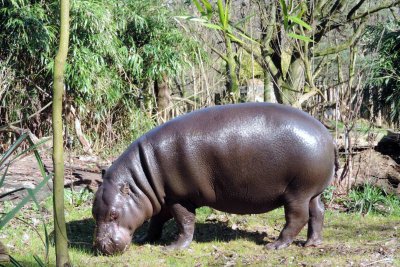News
The common ancestor of hippopotamuses and whales lived on land, contrary to expectations – LOEWE TBG Prof. Michael Hiller involved in the genome analysis work

Hippopotamuses and whales have more in common than appears at first sight. They give birth to and lactate their offspring under water and even their “aquatic” skin, which does not have any sebaceous glands or fur, is very similar. They are even the closest living relatives of each other. A German-American team of research scientists, including Professor Dr Michael Hiller from the LOEWE Centre for Translational Biodiversity Genomics (TBG), has recently discovered that the common ancestor of the two mammals was not an amphibian, but lived on dry land, contrary to expectations.
The scientists have conducted anatomical experiments on the mammals’ skin as well as genome analyses in order to find and compare the genes that are responsible for the skin. “The molecular signatures prove that the features of the “aquatic” skin, which we find on both hippopotamuses and whales, developed separately from each other,” says evolutionary genomics expert, Hiller. “The DNA also reveals that the fundamental genes changed much earlier in the whale family tree than in that of the hippopotamuses.” The two mammals therefore have different evolutionary histories. Whenever a group of animals adapts to water as their habitat, the skin changes accordingly. Hair, nails and sweat glands disappear in the long term. In contrast to whales, hippopotamuses have retained some original features like hooves or specialised sweat glands.
The report has been published in the “Current Biology” scientific journal.

